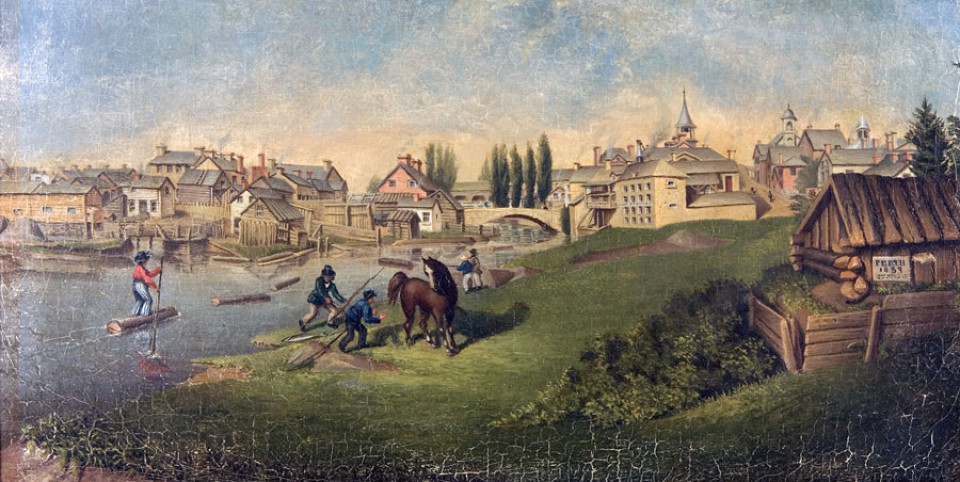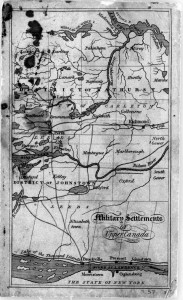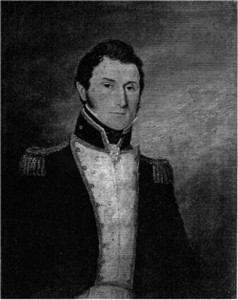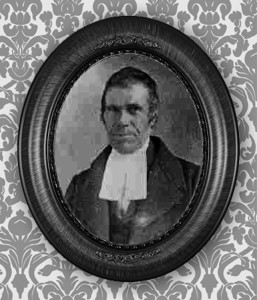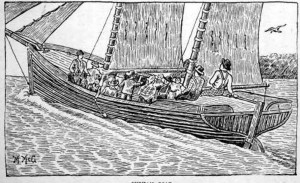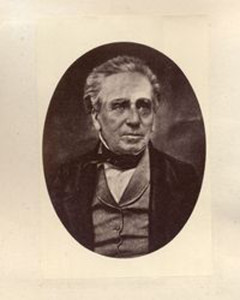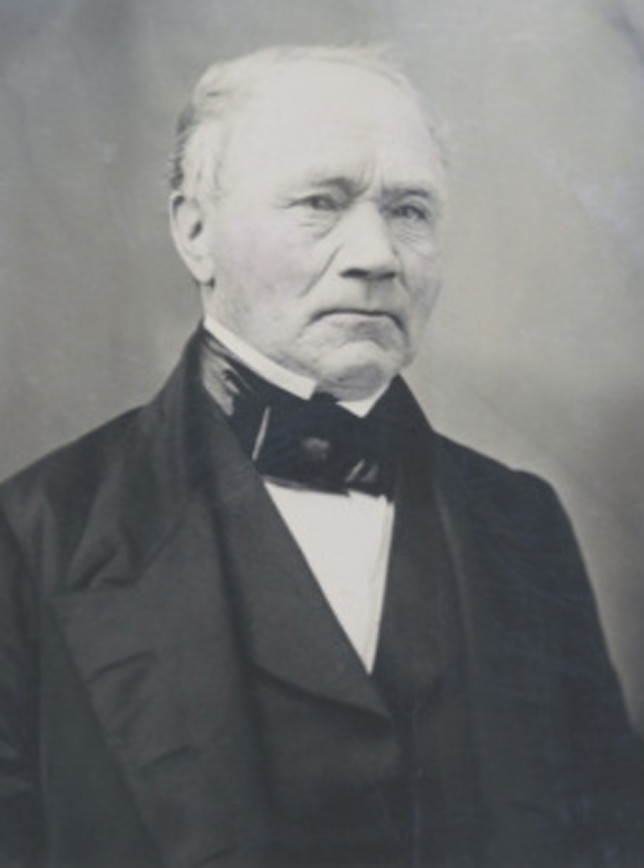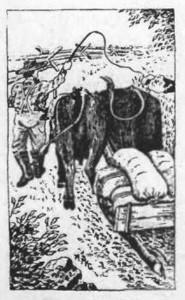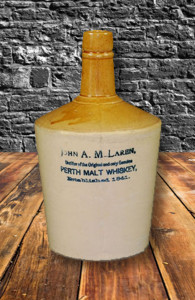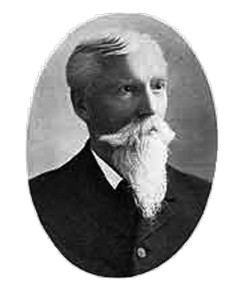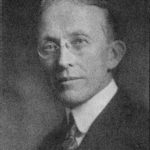The following transcript is taken from the Souvenir Program, Perth Old Home Week, June 27th to July 4th, 1948

From Rev. William Bell, Hints to Emigrants; in a Series of Letters from Upper Canada (Edinburgh: Waugh and Innes, 1824).
There is behind the Town of Perth a tradition that reaches back through the decades to 1815. At that time, Canada – or to be more correct, Upper and Lower Canada – was under the domain and flag of England but fifty odd years, and in that half century England had lost her American colonies, had passed through the French Revolution, the war of 1812 with the States and the return of Napoleon to Europe. England’s time in the fifty years was fully occupied with war, but with the defeat of Napoleon at Waterloo and the close of the war between Canada and the States, English statesmen, in both the Colonial and War Departments, turned their attention to colonization, with the thought uppermost in mind of establishing strategic outposts that would form defence lines back from the waterways that separated Canada from the States. Thus, even before 1815, we have colonization schemes planned, and Perth was the chief centre. Perth settlement was an English Government enterprise, followed by settlements at Richmond and Lanark and the building of the Rideau Canal. Perth was a part of Quebec province, or Lower Canada, and it was not until January 1st 1823, that the Bathurst district was formed. The district to the South was known as Johnstown, with Brockville as the centre. SIR GEORGE PREVOST was the lieutenant-governor of Upper Canada. Many settlers came as far as Brockvile, then walked north about twelve miles and then west to Portland where they were transported on the Rideau to Oliver’s Ferry, coming thence to Perth.
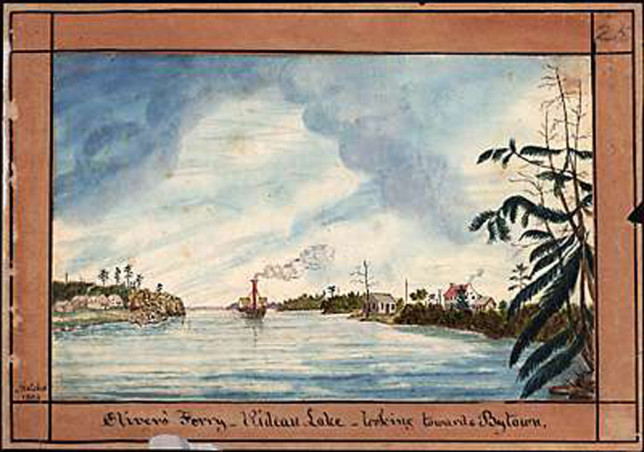
OLIVER’S FERRY 1834. Oliver’s Ferry [looking North], Rideau Lake by Thomas Burrowes, Archives of Ontario. ©Queens Printer
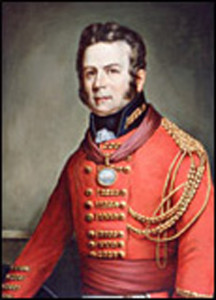
Prevost served as the senior British military commander in Upper and Lower Canada during the War of 1812.
The route was outlined by CAPTAIN ALLAN OTTY, an officer in the Royal Navy, who gave his name to Otty Lake. Three townships formed the basis of the Perth settlement in 1815 and 1816: Drummond, Bathurst and Beckwith.
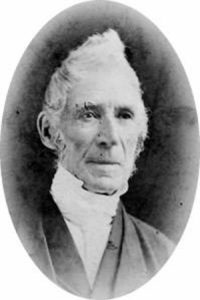 The first church service at the Perth Military Settlement was conducted in the Government Store, in the summer of 1816, by Reverend William Smart (1788-1876). Reverend William Bell (1780-1857), arriving in 1817, would become Perth’s first ‘resident’ minister, but Smart was the first clergyman to reach Perth. He had been preaching along the St. Lawrence at Elizabethtown, Lyn, Yonge, Augusta and Matilda since 1811 and, during the War of 1812-1814, frequently preached to British troops serving at posts along the river. Reverend Smart had delivered the funeral oration for Major General Isaac Brock.
The first church service at the Perth Military Settlement was conducted in the Government Store, in the summer of 1816, by Reverend William Smart (1788-1876). Reverend William Bell (1780-1857), arriving in 1817, would become Perth’s first ‘resident’ minister, but Smart was the first clergyman to reach Perth. He had been preaching along the St. Lawrence at Elizabethtown, Lyn, Yonge, Augusta and Matilda since 1811 and, during the War of 1812-1814, frequently preached to British troops serving at posts along the river. Reverend Smart had delivered the funeral oration for Major General Isaac Brock.
The first minister here in Perth was REV. WILLIAM BELL, who was pastor of the Perth Presbyterian Church in 1817 to 1857. His book “Hints to Emigrants” was published in 1824 and is a seminal work regarding the first settlers of Lanark County.
The settement at Richmond was founded in 1818, named after the Duke of Richmond.
Under the direction of LORD DALHOUSIE in 1820, the settlement of Lanark was undertaken. In 1823, the first large Irish immigration was located at Almonte, followed by the McNab idea in Renfrew County at Arnprior and the building of the Rideau canal. All these were mighty enterprises of over a century ago, with foundations laid deep in virgin forest and along unharnessed rivers that yielded year by year in the development of the country to the splendid area of Eastern Ontario – and more particularly in this instance to the County of Lanark.
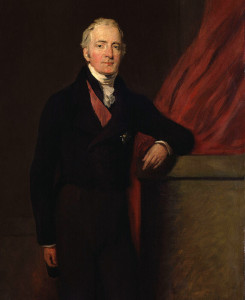
Henry Bathurst, 3rd Earl Bathurst, by William Salter (died 1875). National Portrait Gallery: NPG3697
It is established beyond a doubt that Perth was founded by some pioneer Scotchmen in 1815, and Scottish names were given to the area. This town was named after the city of Perth in Scotland, and it was natural the river on which the town stands took its name after the Scottish Tay. When the time came for a county designation, Lanark was chosen after a county familiar in Scotland’s history. The district of Bathurst was called after the Henry Bathurst, 3rd Earl of Bathurst, a colonial secretary in 1814 who was organizing colonization schemes for Upper Canada.
The district about Perth was favourably described by the pioneer Scotchmen to their friends in the home land, and in the month of May 1815, three transports, the ATLAS, BATISTE MERCHANT, and the DOROTHY sailed from Greenock with three ship loads of Scotchmen, their wives and children. They reached Quebec City and from Quebec City to Montreal the journey was continued by steamer and from Montreal to Prescott and Brockville in a “Durham boat”. [A Durham boat was about thirty feet long with an enclosed space at each end.] Passengers who had a few shillings to spare could obtain sleeping quarters in the tubby holes forward or aft, while those who could not pay slept in the open space in the centre. When the wind favoured and there was no current, such boats were driven by sails; over shallows they were “poled” along by the voyageurs; and up the Long Sault they were hauled by thirteen Yoke of oxen and a team of horses walking on the bank. They reached Prescott and Brockville the middle of September, and too late to proceed to their future homes, they were quartered for the winter at Prescott and Brockville. In April, 1816, they were established on their lands around Perth on the 1st concession of Bathurst and the 10th of Burgess, which to this day is known as the Scotch Line. They were pioneers, a peaceful, thrifty and industrious people, who, year by year, through their own handiwork and almost unassisted, build independencies for themselves and their posterity. Their dominie was JOHN HOLLIDAY.
Then with the close of the war of 1812, the Glengarry Light Infantry Regiment of Fencibles, the Canadian Fencibles and the deWatteville regiments arrived in June 1816, locating in Perth. A town plot was laid out, the Tay was crossed and the sound of revelry was the hum of the axes in the primeval forest.
In 1816, the ships CANNING, DUKE OF BUCHINGHAMSHIRE and COMMERCE brought hundreds from both Ireland and Scotland, for settlement in Elmsley, Burgess, Drummond, Bathurst and Lanark.

MAP OF THE TOWN OF PERTH 1816. Shown on the map is Cockburn Island – Reserved for Public Purposes. Harvey Street with government store and office. Brock Street, Halton Street, Robinson Streets are shown. Readable writing on bottom of the map: Map of the Town of Perth on the Tay River – laid out on Lot no. 2-1 Cou. of the _?_ in the District of Johnston. Scale 4_ to actual. His Excellency Lieut. Governor Gore __?_ in October 1816 was pleased to signify his pleasure that Lot No. 3 in the same County _?_ to the Town Plot and No. 4 received as _?_ in lieu hereof. Signed Lieut. Aidoug_?_ Perth. ©Queen’s Printer for Ontario
Perth, however, may be called a strictly military settlement, as it was first peopled by half pay officers and discharged non-commissioned officers and men, when peace was declared btween England and the States and between England and Napoleon. Grants of land were made by the Government, captains receiving 800 acres of land, lieutenants 600, ensigns 400, non-commissioned officers in proportion to their rank, and privates 100 acres.
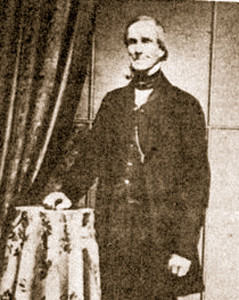 In 1816 CAPTAIN JOSHUA ADAMS, a veteran who served in the American War of 1812-13 in the Canadian Militia, was about the first to draw a town lot of an acre, and here erected a tavern thereon. Shortly after that soldiers began to pour in, and pending the taking up of their allotments, camped on the island in the Tay which was named after SIR FRANCIS COCKBURNSir Francis Cockburn, and is even today known officially as Cockburn’s island. The settlers were for the most part 49th regiment and foreign legion men, who, with their wives and families, were conveyed in the month of May, 1816, in wagons, from the various stations at which they were discharged, to Portland, twenty-eight miles north of Brockville, where they embarked in a scow owned by a man named LINDAYS, thence down the Rideau Lake and up the Tay River to Perth. Here was a Government store-house, under the charge of CAPT. FOWLER, CAPT. GREGG, having as a subaltern MR. DAVERN and MR. ALEX. MATHESON and SERGT. CAMPBELL, of the Glengarry Fencibles, as issuers of stores. The store house was on the southwest corner of the bridge at Gore Street, where Spalding and the Stewart’s distillery later stood for any years, and there on the 24th of each month, rations with necessary household and agricultural implements were issued to the settlers – males received per diem, one pound of pork and the same weight of flour – females half that amount, children of ten, one quarter rations. This arrangement was only to last until the settlers had got some land under cultivation, and were in some sort of postion to help themselves – at this time the settlers lived in the rudest of huts, roofed with bark and wooden boughs, and as winter came on most of them moved off to Brockville, Prescott and Montreal, and there remained until the following spring. However, the first year a quantity of potatoes were planted, and three bushels of seed fall wheat, obtained from the Government store, was also put into the grund.
In 1816 CAPTAIN JOSHUA ADAMS, a veteran who served in the American War of 1812-13 in the Canadian Militia, was about the first to draw a town lot of an acre, and here erected a tavern thereon. Shortly after that soldiers began to pour in, and pending the taking up of their allotments, camped on the island in the Tay which was named after SIR FRANCIS COCKBURNSir Francis Cockburn, and is even today known officially as Cockburn’s island. The settlers were for the most part 49th regiment and foreign legion men, who, with their wives and families, were conveyed in the month of May, 1816, in wagons, from the various stations at which they were discharged, to Portland, twenty-eight miles north of Brockville, where they embarked in a scow owned by a man named LINDAYS, thence down the Rideau Lake and up the Tay River to Perth. Here was a Government store-house, under the charge of CAPT. FOWLER, CAPT. GREGG, having as a subaltern MR. DAVERN and MR. ALEX. MATHESON and SERGT. CAMPBELL, of the Glengarry Fencibles, as issuers of stores. The store house was on the southwest corner of the bridge at Gore Street, where Spalding and the Stewart’s distillery later stood for any years, and there on the 24th of each month, rations with necessary household and agricultural implements were issued to the settlers – males received per diem, one pound of pork and the same weight of flour – females half that amount, children of ten, one quarter rations. This arrangement was only to last until the settlers had got some land under cultivation, and were in some sort of postion to help themselves – at this time the settlers lived in the rudest of huts, roofed with bark and wooden boughs, and as winter came on most of them moved off to Brockville, Prescott and Montreal, and there remained until the following spring. However, the first year a quantity of potatoes were planted, and three bushels of seed fall wheat, obtained from the Government store, was also put into the grund.
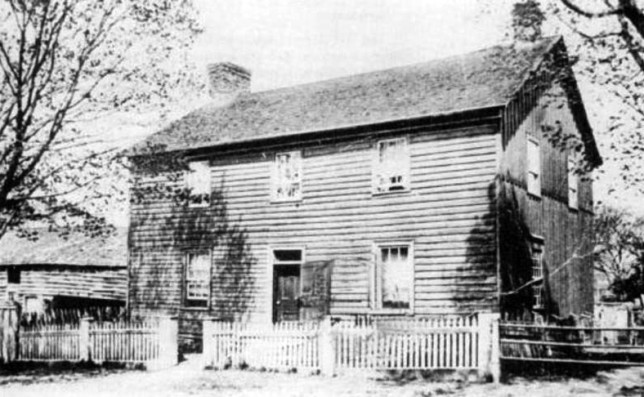
THE LITTLE RED HOUSE, 1907, the oldest house in Perth, now at 65 Craig Street was built of logs in 1816. Constructed by Lieut. John Adamson the house has served at various times as tavern, school, church, public hall, masonic lodge and printing office. Rev. William Bell held his first services in the attic of this house and Rev Michael Harris use the same quarters for his Anglican serves for three years, 1819-1822. A mid-19th-Century fire partly damaged the house and the Duke of Richmond, during his visit in 1819 who recommended that it be painted red. While the duke’s assurance to Mrs Adamson that if painted red, Adamson’s Inn would never need painting again was wishful thinking, the paint job did last for about 30 years, at which time the new owners had it painted white. It has been painted white ever since.
As the spring of 1817 opened, the settlers began to return, and clearing of land commenced in earnest. Many of the single men, however, got sick of a backwoods life, the work being too hard for them and they turned trappers or hunters, or else sought employment in the more settled parts of Canada, and the United States. The married men having the responsibiilty of wives and families to provide for, stuck manfully to the task before them and were not long in laying the foundation of a career of prosperity. The year of 1817 was, however, one of great hardship and privation, and the settlers were in great straits, in fact, on the verge of starvation. The crop of potatoes was destroyed by the frost, and the rust got into the wheat. Some families lived for three weeks on the wild leeks they found in the woods. An application was at last made to the Government for the issue of an additional half ration per head, which was granted, and the famine which was imminent was averted.
Timely assistance and a patient waiting for better times, tided the setters over their difficulties; the lane turned and the highway to Prosperity was soon reached; the clearings became larger, the dwellings began to assume some semblance of comfort, crops were better year by year, and each Spring saw fresh bands of settlers coming to Perth, and quite a large community was formed by degrees. While this was going on, the Capt. Adams before mentioned, gave up his tavern, and put up one of the first grist and saw mills on lot 20, in the 2nd concession of Bathurst, County of Lanark, and he soon began to derive a brisk trade.
The first store was opened in 1816 by MR. (afterwards the Hon.) WM. MORRIS, father of LIEUTENANT-GOVERNER MORRIS, of Manitoba, the latter subsequently partner of MR. W.H. RADENHURST who was mayor of Perth in 1877. This store was on the south side of the river Tay, then unbridged, and there the town may be said to have started. A ferry was then used to ply across the river, and cattle, when moved from the north to the south side, and of course vice versa, had to swim the stream. The next store was established by BENJAMIN DELISLE, an ex-captain in the Canadian Fencibles, who came to the settlement in July or August 1816. His store was also on the south side of the Tay, near where St. James’ Anglican church is now. Mr. Delisle, after doing business there for some years, removed to Montreal where he died. Others came in their turn, and the place began to be in some measure independent of other markets at a distance.
As the settlement grew, of course someone was wanted to look after their spiritual welfare and then came the first Protestant clergyman, in the person of REV. WILLIAM BELL, a Presbyterian minister. He had his church which has been burnt down, in the south-east portion of the town. He ministered faithfully to his flock for many years, and was highly esteemed by the members of all creeds as being a thoroughly good man. In 1820 came the REV. MICHAEL HARRIS, an Episcopal clergyman, and co-temporary with him was the REV. FATHER LAMOTHE, the first Roman Catholic priest. Then, of course, the physical ailments of the settlers had to be attended to and a disciple of Galen, a DR. THOM, formerly of the 41st regiment, came among the people. The gallant, and no doubt learned doctor, must have been a gentleman of a practical turn or mind, or else the place was unprofitably healthy that time hung heavily on his hands, and the piastres did not come in plenteously enough to please him, for he started a grist and saw mill on the site of the one later belonging to the late HON JOHN G. HAGGART, M.P. History does not go so far as to state whether the doctor had a lathe in his mill for the purpose of turning his own wooden legs, but probably that branch of industry was not sufficiently developed in Perth at that time to make it profitable; it is on record though that the saw mill and the compounding of physic agreed well together, and the doctor accumulated many shekels doubtless well earned. Before his advent, any small parcels of grain raised had to be ground in pepper mills, or boiled whole. About this time, too, the seed for the patches of ground cleared had to be carried on men’s backs from the settlement behind Brockville, and a good proportion of the provisions were taken into Perth in the same way.
RODERICK MATHESON was born in Lochcarron, Ross-shire, Scotland in 1793 and came to Lower Canada around 1806. He served with the Glengarry Fencibles during the War of 1812, reaching the rank of lieutenant. In 1817, he settled at the military settlement at Perth. Matheson operated a general store there and was a director of the Tay Navigation Company. In 1847, he was appointed to the Legislative Council of the Province of Canada and, in 1855, he was made colonel and put in charge of the 1st military district of Canada West. He was named a Senator after Confederation.
In 1817 the first native of the town, Mr. JAMES BELL, was born. This gentleman’s father, who it will be remembered was the Presbyterian minister, used to tell of the difficulties to be contended with in a trip from Perth to Brockville, in these days; there was nothing but a foot trail, and that not particularly clearly defined either – scarcely a vestige of human life was to be seen, and the only marks of civilization were the few miserable cabins of some settlers near the bank of the Rideau River. The woods then abounded in wild animals many of which man was not desirous of forming any close acquaintance with. Bears, wolves, wolverines, wild cats, etc., deer, partridge, and other game were plentiful, but the prices given for the pelts scarcely paid for the means adopted for obtaining them, to say nothing of the trouble and risk; but notwithstanding this, several of the settlers then eked out their scanty livelihood by the sale or barter of the spoils of the chase.
A few years which were not remarkable for any event of importance passed over the heads of the settlers, who kept adding to their numbers – people of all classes, creeds and nationalities. Prominent among those who went out to seek their fortunes in the wilds were CAPT. MARSHALL, CAPT. McMULLEN, and CAPT. McKAY, all of the Canadian Fencibles, which has been embodied for service for several years previously: LIEUTS. WATSON, O’CONNOR and MONK MASON (afterwards recalled for service in the 24th regiment), BLAIR, of the Glengarry Fencibles; PLAYFAIR, and FRASER, the father of MR. JAS. FRASER, who was the deputy clerk of the Crown in Ottawa in 1877.
The first jail and court house was built of brick, on the south site of the river, in 1821 or 1822, probably its erection extended over a portion of both these years. The structure was afterwards burnt down, and the present one, a handsome free stone edifice, was put up in its stead.
The first death recorded in the annals of Perth was that of the wife of SERGT WALLESLEY RITCHIE, of the 89th regiment, in 1816, and her remains were interred in what is now the English cemetery on the south side of the Tay. Mortality does not seem to have been large until the year 1832, when the cholera was the cause of some deaths among the settlers.
The next band of emigrants to take up their residence in the Township of Lanark was a number of Paisley weavers. They all took up land and entered vigorously into farming pursuits. They were an industrious law-abiding folk, adapting themselves easily to their new mode of life, and were soon a large and important item in the list of colonists. Despite the hardships which, perhaps from the use of the loom and shuttle to that of the spade, axe and plough, they felt in keener degree than their fellow settlers, they rapidly acquired wealth and not a few of them left to their posterity handsome dependencies.
Fall wheat was first grown in large (for these times) quantities in 1823, and the succeeding years. The only outlet and market for it was Brockville, to which place it was taken by oxen teams, a rude road having by this date, been made, there being no horses in the settlement until about 1830, when Mr. Henry Glass procured a team. The wheat sold in Brockville at three shillings and six-pence currency per bushel, and the settlers paid in kind, taking home supplies for their families – but a very small quantity of money being afloat in those days, in fact, until some of the veterans applied for, and obtained pensions from the British Government, the whole, or nearly the whole, trade was done on the barter system. The making of potash became quite an extensive branch of industry, and large quantities of it were shipped, both winter and summer, by ox teams to the Brockville market. For this article money was generally supposed to be paid, but the amout was nearly as a rule eaten up by the credits obtained by the farmers from the storekeepers, who, it would seem invariably got the best of the bargain, although the settlers tried to sail as close to the wind as possible. The trade in potash was an extremely brisk one until the lumber trade was opened in 1834 by ROGERS and THOMPSON, PORTER, and GEMMELL, ALEX. and HENRY MONTGOMERY, JAMES FLINTOFF and others. The lumbering operations in the immediate vicinity of Perth were of a most extensive character, and the settlers then saw to their sorrow the amount of valuable timber which had been burnt by them, when clearing their lots, and the thousands of dollars which had been literally thrown into the fire. However they were not the kind of people to indulge in vain regrets, and not a few of them went into the business themselves and carried it on for some years successfully and profitaably. 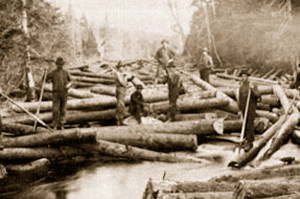 The timber thus obtained was drawn to Brockville, there rafted, and went by the St. Lawrence river to Quebec; large quantities were floated down the Tay to the Rideau River, and thence to Ottawa en route also for Quebec. Staves and square oak for many years formed the staple of the trade. The business while it formed the important office of clearing the land, of course was the means of bringing large numbers of men into the town for by this time the settlement had grown to a size which entitled it to that designation, and stone houses following, the first one build by 1823, by JOHN FERGUSON, a Highlander, who delighted in the patronymic of Craigdarrich, which began to be erected on all sides. Perth then commenced to be a place of importance but previous to this, and as far back as 1824, before Carleton was made a county in itself, the Court of King’s Bench sat there twice a year, and all the law business of Bytown was transacted there. Perth was originally in the district of Johnstown, but was subsequently made into the district of Bathurst, which embraced that portion of the now County of Carleton north and west of the Rideau, and also what is now the County of Renfrew. When Bytown became Ottawa, Perth was shorn of much of its importance. The present Capital, with its more advantageous surroundings and facilities for carrying on a vast lumber business soon outstripped her elder sister with rapid strides.
The timber thus obtained was drawn to Brockville, there rafted, and went by the St. Lawrence river to Quebec; large quantities were floated down the Tay to the Rideau River, and thence to Ottawa en route also for Quebec. Staves and square oak for many years formed the staple of the trade. The business while it formed the important office of clearing the land, of course was the means of bringing large numbers of men into the town for by this time the settlement had grown to a size which entitled it to that designation, and stone houses following, the first one build by 1823, by JOHN FERGUSON, a Highlander, who delighted in the patronymic of Craigdarrich, which began to be erected on all sides. Perth then commenced to be a place of importance but previous to this, and as far back as 1824, before Carleton was made a county in itself, the Court of King’s Bench sat there twice a year, and all the law business of Bytown was transacted there. Perth was originally in the district of Johnstown, but was subsequently made into the district of Bathurst, which embraced that portion of the now County of Carleton north and west of the Rideau, and also what is now the County of Renfrew. When Bytown became Ottawa, Perth was shorn of much of its importance. The present Capital, with its more advantageous surroundings and facilities for carrying on a vast lumber business soon outstripped her elder sister with rapid strides.
Meanwhile Perth was not idle, but in its own quiet but sure commercial method of carrying on trade, increased in solidity and wealth, each year witnessing the opening of extensive stores. A distillery established by HENRY GRAHAM, an ex-captain in the army during this period, formed an important item in the commerce of the place, and for years the town had one of the most perfect distillerie in the Dominion, that of MR. J.A. McLAREN, who manufactured Scotch whiskey equal to the best ever brewed in Scotland. This distillery was torn down a few years ago, passing out of business and today its old site is part of the John A. Stewart Park that has been given to the town by Mrs. Stewart. Most of the building was torn down several years ago and a garage and service station operated by MUNROE and FERRIER occupies the site of the old landmark. One of the early storekeepers was the late HON. MALCOLM CAMERON who, when a boy in 1821, used to ferry passengers across the Mississippi River on the road to Lanark, and whose parents kept a public house or stopping place for settlers of that district close to the ferry. In after years Mr. Cameron kept a tavern and afterwards a general store at the corner of Gore and Foster streets. Subsequently he was in partnership with MR. H. GLASS, and carried on business on the present site of the Hotel Perth.
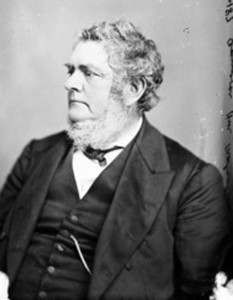
Hon. Malcolm Cameron, N.P. (Ontario South) b. Apr. 25, 1808 – d. June 6, 1876. Source: Library and Archives Canada/MIKAN 3476652
The population increased steadily for ten years after the Rideau Canal was finished, many of themen who had been employed on the work, settling in the town or its immediate vicinity. One instance of the progress of the place may be quoted, and it is in the establishment of the first newspaper which was called the Examiner and was edited by either William Tully or John Stewart, who was also a schoolmaster. This was in 1825 or 1826. The Examiner afterwards merged with the Courier in 1834, when MR. JOHN CAMERON, brother of the late Hon. MALCOLM CAMERON, occupied the editorial chair. At his death, MR. Malcolm Cameron succeeded him, from his hands it passed into those of Mr. James Thompson, Sheriff of Lanark for many years, who conducted it for a time. Mr. Charles Rice, clerk of the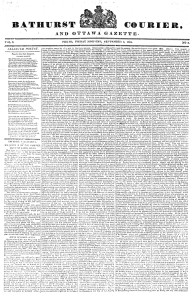 County Court, bought it from Mr. Thompson and after running it successfully for some time, on his appointment to the office, he sold it to Mr. G.L. Walker, in 1863. In 1868, Mr. Walker took MR. J.M. Walker, into partnership. Mr. G.L. Walker died in 1874 and the Courier became the property of Messrs. J.M. and W.T. Walker, under the name of the Walker Bros. Mr. W.T. Walker died in 1901 and the paper was carried on by J.M. until October 1st, 1901, when he sold it to his nephew, Walter W. Walker.
County Court, bought it from Mr. Thompson and after running it successfully for some time, on his appointment to the office, he sold it to Mr. G.L. Walker, in 1863. In 1868, Mr. Walker took MR. J.M. Walker, into partnership. Mr. G.L. Walker died in 1874 and the Courier became the property of Messrs. J.M. and W.T. Walker, under the name of the Walker Bros. Mr. W.T. Walker died in 1901 and the paper was carried on by J.M. until October 1st, 1901, when he sold it to his nephew, Walter W. Walker. 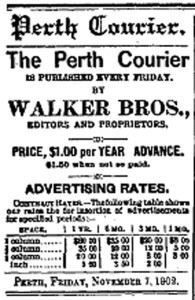 In October 1934 the Courier was incorporated and known as the Perth Courier Publishing Company. Its provisional directors were Walter W. Walker, Weston W. Walker and Thomas. Vincent Lally. In January 1936, the Courier purchased the Expositer Publishing Company, and Perth became a one newspaper town.
In October 1934 the Courier was incorporated and known as the Perth Courier Publishing Company. Its provisional directors were Walter W. Walker, Weston W. Walker and Thomas. Vincent Lally. In January 1936, the Courier purchased the Expositer Publishing Company, and Perth became a one newspaper town.
Prior to 1860 the Conservative Journal in Perth and Bathurst district was the Perth Observer, launched by RICHARD CAMPBELL, whose facile pen in the middle of the last century stirred the residents to the marrow bone. The British Standard was in existence at the time too. In 1860 the Perth Expositor was launched by THOMAS CAIRNS, who came here from Kingston. Mr. Cairns conducted the Expositor for a short time when he took into partnership THOMAS SCOTT in 1861 and was its editor and proprietor, until 1872. Col. Thomas Scott was in command of the Perth Infantry and served for five months on the frontier during the Fenian Raids crisis in 1866. and went on to military fame during the Red River Expedition in Manitoba. He became Manitoba Member of the Legislative Assembly, Member of Parliament and Mayor of Winnipeg. After the appointment of Mr. Cairns to the position of Postmaster at Perth, and Scotts departure the paper was eventually taken over by MESSRS. EDWARD ELLIOTT, afterwards Judge Elliot of London, Ont, and WM. BERFORD, both deceased.
In 1896 COL. A.J. MATHESON, became the proprietor and editor with CAPT. J.W. MOTHERWELL as publisher. Both these worthy newspaper men have also passed to the great beyond. In 1886 CHAS. F. STONE, fresh from Perth Collegiate, entered the Expositor as “printer’s devil,” and completed his apprenticeship in September, 1890, when he secured a position on the Deseronto Tribune, later on the Wiarton Echo and the Petrolia Advertiser. In 1893, on account of the illness of Capt. Montherwell, Mr. Stone was offered the position of publisher and accepted it in March of that year. Three years later, after Col. Matheson had received the endorsation of the electors of South Lanark to represent them in the Provincial Legislature, the control of the Expositor passed into the hands of Mr. Stone, who was its editor and proprietor until early in 1914, when he was appointed Collector of Inland Revenue. His son, the late HAROLD E. STONE, who was killed overseas, published it until December 1914, when the Expositor passed into the hands of Mr. John A. Stewart.
Perth appears to have been a sort of Eldorado for knights of the quill, so far as appointments have been concerned, or else the brethren must have possessed abilities of an extraordinary high order, and have been fortunate enough to have their merits appreciated and recognized in high quarters, and repaid rewards accordingly. Here’s a list: – Mr. J. Thompson, of the Courier as a Sheriff of Lanark; the late Hon. Malcolm Cameron, also a Courier man, made a Senator; Mr. Charles Rice, also a Courier man, Deputy Clerk of the Crown and Clerk of the County Court; Mr. Thomas Cairns, of the Expositor, a Postmaster of Perth; Mr. Thomas Scott, another Expositor man, he being martial in his tastes, was made a “Captain bold” of Red Riverites; and Mr. Richard Shaw, who held an appointment in the Inland Revenue. Then Mr. Stone was made collector of Inland Revenue in 1914.
Perth, in the eighties and nineties, gave evidence of its stability and boasted of a happy and prosperous community. These might be termed the carshop years of the town, when the C.P.R. operated works here to build freight cars. Times where blue when the shipes were closed in 1903 or ’04 but better times were ahead.
When the first reunion was held in 1905, the town had just voted $25,000 to bring the HENRY K. WOMPOLE CO. here, and in the decades that have gone we have made substantial industrial progress. We have today many thriving industries. We are splendidly equipped with modern conveniences in the way of granolithic walks, sewers, waterworks, electric lights and paved streets.
While Perth keeps up with the times and plays here part in all affairs, our population, while not increasing rapidly, is now moving close to the five thousand mark. We have equipment to maintain perhaps a population twice our present number, and perhaps some day we may realize those dreams, but in the meantime Perth moves surely, meets its obligations yearly and continues to be a real factor in Canadian life.
Perth people of today are proud of the town’s splendid history. We ever strive to live up to old traditions.
Perth Old Home Week Committee 1948
These two links below take you back in time to the Perth Courier, December 22, 1916 with an account of the founding of Perth and other interesting historical facts:
More on the history can be found at this link that has transcripts from 1905 Perth Courier: Lanark County Genealogical Society.
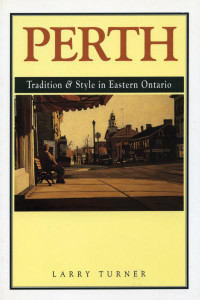 A great book on the history of Perth by Larry Turner.
A great book on the history of Perth by Larry Turner.
Link: https://www.dundurn.com/books/perth
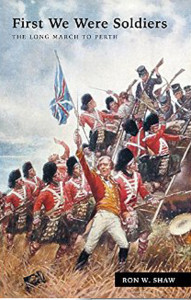 Ron Shaw’s Book: First We Were Soldiers – The Long March To Perth. A great read and reference. In First We Were Soldiers Ron W. Shaw introduces us to a cross section of Perth’s Soldier-Settlers — corrupt officers and illiterate Privates, heroes and deserters, wives rescuing wounded husbands from the battlefield, and children born on storm tossed troop ships or in POW camps. In the mix were English, Scots and Irish, as well as Swiss, French, Dutch, Polish, Sicilian and American. Shaw portrays the lives of the men and their families, as they marched with the armies of Wellington and Prevost across the Iberian Peninsula and through the North American backwoods before finding themselves swinging an axe in the elm forests and cedar swamps north of the Rideau River.
Ron Shaw’s Book: First We Were Soldiers – The Long March To Perth. A great read and reference. In First We Were Soldiers Ron W. Shaw introduces us to a cross section of Perth’s Soldier-Settlers — corrupt officers and illiterate Privates, heroes and deserters, wives rescuing wounded husbands from the battlefield, and children born on storm tossed troop ships or in POW camps. In the mix were English, Scots and Irish, as well as Swiss, French, Dutch, Polish, Sicilian and American. Shaw portrays the lives of the men and their families, as they marched with the armies of Wellington and Prevost across the Iberian Peninsula and through the North American backwoods before finding themselves swinging an axe in the elm forests and cedar swamps north of the Rideau River.
http://www.amazon.ca/First-Were-Soldiers-Ron-Shaw/dp/1460259718/ref=tmm_hrd_title_0
